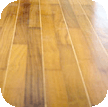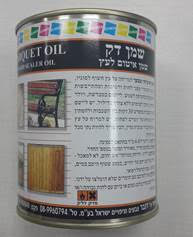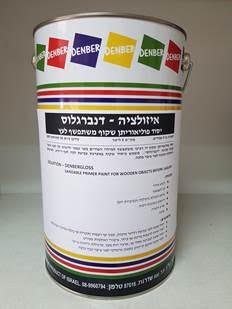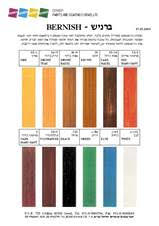Varnish for wood. How to choose the right varnish for wood
Varnish for wood How to choose the right varnish for wood
Proper care and varnish coating for the right wood
Our wood products, parquet, finishes, pergolas, wind boxes, garden furniture, wooden railings, wooden stairs, wooden fences, walls and wooden ceilings, etc. all provide the house with beauty and a warm atmosphere, all require proper and regular care to maintain beauty and integrity.

Wood is sensitive to weather damage and especially to rain (moisture causes decay and mold) and direct sun (dries and cracks), wood floors in addition to all these are also susceptible to abrasion.
Proper care and varnish coating for the right wood will extend the life of the wood and preserve its beauty and integrity over the years.
Proper care and varnish coating for the right wood
 Surface preparation: wood of all kinds, before a new coating or an old renovation, should be polished well with glass paper with the direction of the fibers and not against them, until a clean, straight and smooth layer is reached. An old coating of varnish or paint is very difficult to remove, can be removed only with no choice with Denber gel paint remover . (Apply the gel, wait 20-30 minutes and rinse with water). And the reason for this is simple: the paint remover will lower the stubborn coating but will also penetrate the wood. The removal of the paint remover with the paint / varnish will be done with a putty scraper and rinsing with as high a water pressure as possible, the water will disperse the paint remover and also penetrate part of it into the wood and it will be difficult to get rid of it completely. This will cause a bad odor and peeling of the new coating in these places and in general wetting the wood before coating is not recommended. It is therefore advisable to strain and polish and remove by polishing and dry pumping without wetting the wood at all. Wet wood cannot absorb the depth of thin oil / flax, the water will cause bubbles in the coating, when it evaporates leaving voids and cracks.
Surface preparation: wood of all kinds, before a new coating or an old renovation, should be polished well with glass paper with the direction of the fibers and not against them, until a clean, straight and smooth layer is reached. An old coating of varnish or paint is very difficult to remove, can be removed only with no choice with Denber gel paint remover . (Apply the gel, wait 20-30 minutes and rinse with water). And the reason for this is simple: the paint remover will lower the stubborn coating but will also penetrate the wood. The removal of the paint remover with the paint / varnish will be done with a putty scraper and rinsing with as high a water pressure as possible, the water will disperse the paint remover and also penetrate part of it into the wood and it will be difficult to get rid of it completely. This will cause a bad odor and peeling of the new coating in these places and in general wetting the wood before coating is not recommended. It is therefore advisable to strain and polish and remove by polishing and dry pumping without wetting the wood at all. Wet wood cannot absorb the depth of thin oil / flax, the water will cause bubbles in the coating, when it evaporates leaving voids and cracks.
Proper care and varnish coating for the right wood
 Lubricating the wood: Now that the wood is dry, polished, clean and vacuumed, generously apply a thin oil for impregnation. Available with a brush or roller and infuse the oil while applying. Excess oil on the wood surface can be removed immediately with a dry, clean cloth. Do not leave puddles in the sockets. The thin oil penetrates and lubricates the wood, increases its flexibility and prevents dehydration and cracking. Wait 2-3 days for the oil to completely dry. We will pass with a fine sandpaper on the surface, vacuumed and cleaned with a dry cloth.
Lubricating the wood: Now that the wood is dry, polished, clean and vacuumed, generously apply a thin oil for impregnation. Available with a brush or roller and infuse the oil while applying. Excess oil on the wood surface can be removed immediately with a dry, clean cloth. Do not leave puddles in the sockets. The thin oil penetrates and lubricates the wood, increases its flexibility and prevents dehydration and cracking. Wait 2-3 days for the oil to completely dry. We will pass with a fine sandpaper on the surface, vacuumed and cleaned with a dry cloth.

 Sealant primer for wood: two options, both good: Primer Sealer – single-component primer, quick-drying, Isolation I + 50% hardener – two-component insulation. Both are very strong transparent and can be polished relatively easily as a surface preparation for coating. Apply a coat of primer over all areas of the wood, wait for it to dry and rub lightly. The foundation will fill all the nozzles in the wood and seal it. You can return with a second layer of foundation to ensure perfect sealing and cutting of rising wood fibers. It should be noted that these are based on thinner and not water-based and are most suitable for application on oil-soaked wood. A water-based foundation will not penetrate the oil layer nor will it adhere to it properly and peel off relatively quickly.
Sealant primer for wood: two options, both good: Primer Sealer – single-component primer, quick-drying, Isolation I + 50% hardener – two-component insulation. Both are very strong transparent and can be polished relatively easily as a surface preparation for coating. Apply a coat of primer over all areas of the wood, wait for it to dry and rub lightly. The foundation will fill all the nozzles in the wood and seal it. You can return with a second layer of foundation to ensure perfect sealing and cutting of rising wood fibers. It should be noted that these are based on thinner and not water-based and are most suitable for application on oil-soaked wood. A water-based foundation will not penetrate the oil layer nor will it adhere to it properly and peel off relatively quickly.
Top finishing layer: Here too we have a number of options from the best of the best.
Varnish for wood How to choose the right varnish
Proper care and varnish coating for the right wood
First option – Varnish synthetic varnish for wood – Transparent or decorative synthetic varnish in natural wood shades (see Bernish shades panel) One-component easy to apply in application, no special skill required for application on wood. Decorative and protective and opaque and resistant to outdoor conditions. Also water-based: Bernish Aqua water-based in shades of wood. Not suitable for flooring but good for all other wooden elements. It is necessary to renew this varnish before the rainy season to keep the wood in contact with the rainwater. The same Bernish Anti-flame varnish can be used with a flame retardant that prevents its flammability.
Second option – Bernish Yacht lacquer for wooden boats and wooden furniture, stronger and more washable lacquer. Scratch resistance but also is not recommended for floors but for all other uses.


Can also be applied by spraying with varnish spray in all shades for small areas and for repairs and routine maintenance.
Third option – the strongest and best of all, which extends life in outdoor conditions more than all the other options, both for thin and abrasion-resistant parquet floors and for all other uses. Denbergloss floor Polyurethane paint for painting floors, clear or colored clear in shades of semi-opaque or opaque colored in any shade and gloss to choose from – glossy or matte, and also – Denbergloss Anti-flame antifungal fireproof which also contains flame retardants to prevent wood flare. (Read this product specification thoroughly as it is part of a fire protection system).
 English
English עברית
עברית Русский
Русский